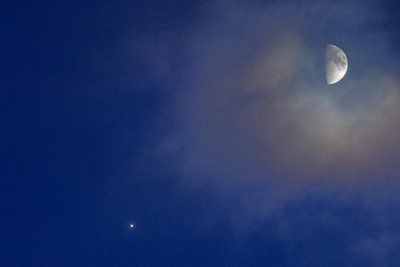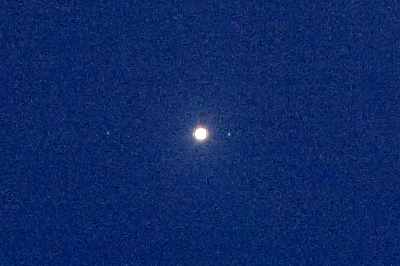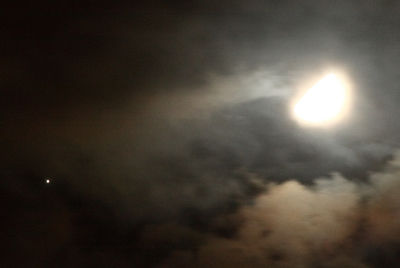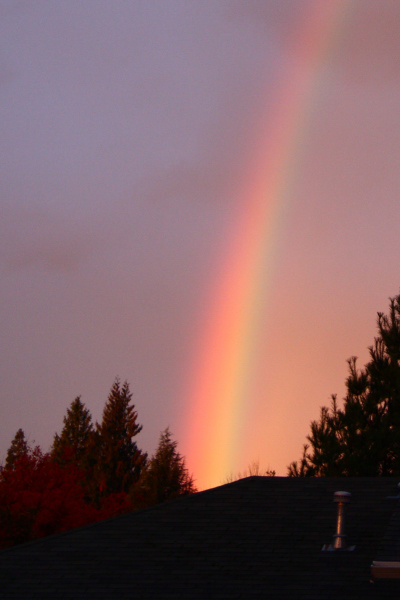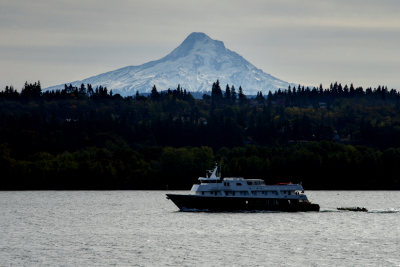
Waves on water. Moving boat against a static background. Back-lit hillside with almost-backlit mountain. Bright high cloud layer. Impossible shot. Until now. (Click on the image for closer examination.)
Using my recently-discovered RAW-format HDR technique, I "developed" three exposure levels from one photograph containing the dynamic range of 36 bits per pixel instead of JPEG's 24 bits:
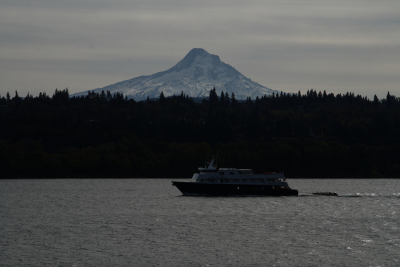


Photomatix helped me blend the three exposure levels into a shot that balances the highlights and shadows similar to the way my eyes did as I gazed at Mount Hood across the river from the Washington side of the Columbia Gorge. Here it is again, for comparison with the three component shots:

I know, I sound like a broken record about HDR -- but it's one of those tools I now consider to be essential. Also, shooting 36-bit RAW, every shot is automatically bracketed for post-production exposure optimization and potential HDR processing.
Who says an old dog can't learn new tricks? :-)

